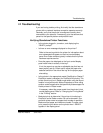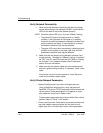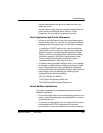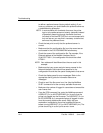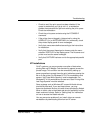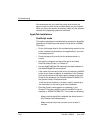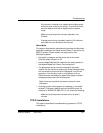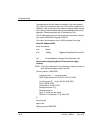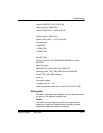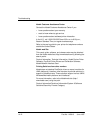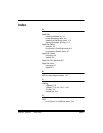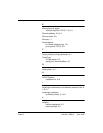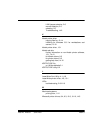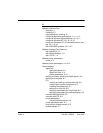
Troubleshooting
Part No.1H9613 June 1997 14-9
No answer from
<printername>
If you are using the 10BaseT port and have nonstandard cabling
such as AT&T or HP STARLAN, you may need to disable link
integrity. Refer to "Disabling the Link Test Integrity Function" in the
“Installing the Hardware” section for instructions.
You can ping the printer but cannot print.
The problem is with the
lpr/lpd
setting.
Verify that the
printcap
entries are correct. Each line should begin
with a colon (:) and except for the last line should end with:\. Each
line after the first line should be indented (tabbed). A sample
entry is shown in “UNIX BSD Systems.”
If there are problems in the printcap entries, the files will not print,
and you will get the message “warning: no daemon present”
when you try to look at the print queue using the lpq -P
<printername> command. The file /usr/adm/lpd-errs will contain
error messages explaining why the file was not printed. Check for
error messages.
You can only print small files.
If large files (usually 1 MB or more) fail to print, check to see if the
printcap entry contains a line reading:mx#0. If the line does not
exist, you should add it. You should also check to see if there is
enough room in the spool directory to accommodate large files.
You cannot print from a DOS or Windows application.
If you cannot print from the application you are using, redirect the
output to a file from the application, and print the file from the
command line. This will help you to determine if the application is
sending the data properly or if a problem exists at the application
or driver level.
Telnet
Monitoring Network Interface Card Activity with Telnet
The monitoring of activity by the Network Interface Card is
accomplished by a telnet session using TCP/IP network protocol.
You must have telnet capability on any Windows/Macintosh/UNIX
platform on the network, and an IP address must be assigned to
the printer from the front control/display panel.



